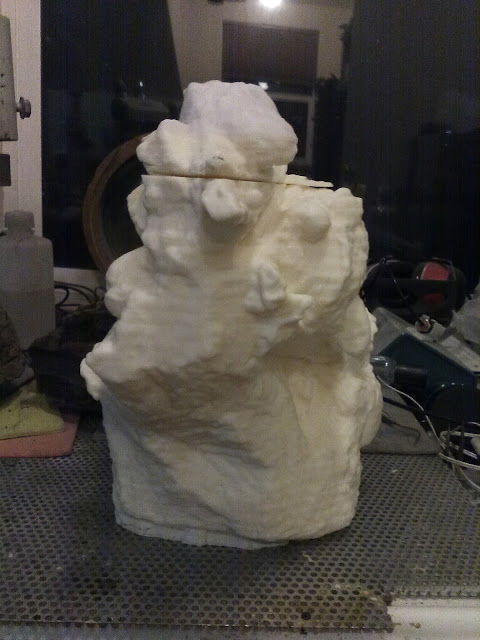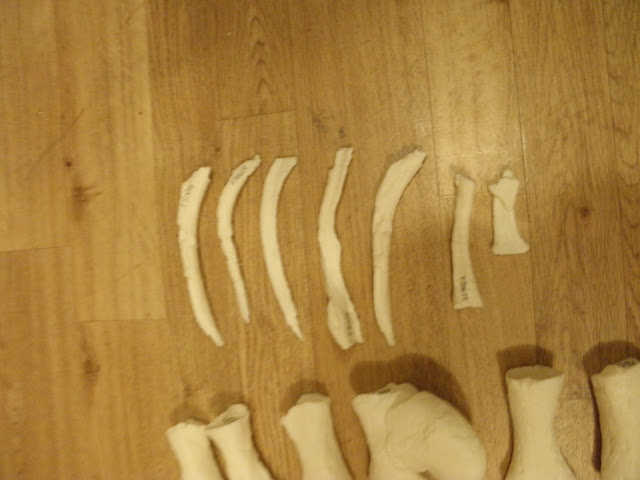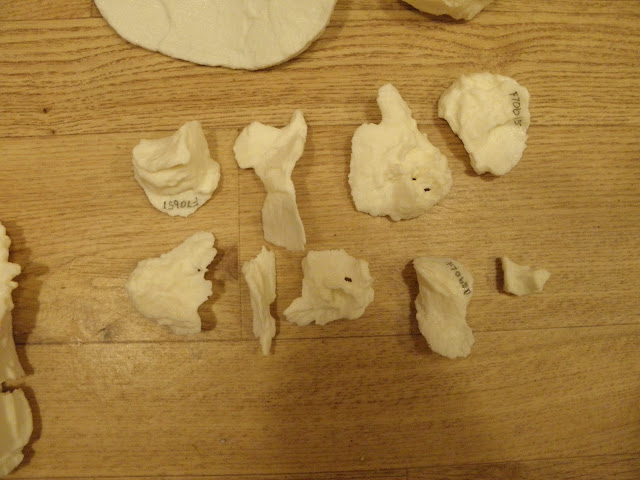I haven't had too much new in preparing actual bones lately - ribs, gastralia pieces, centrums and neural arches. All well known stuff, even somewhat boring. No limb, skull or unusual bones at all. Several large blocks have been pretty barren of bones, so they quickly went from 'unprepared' to 'scrap' piles.
What I have been busy with is 3D printing. I decided to print out 3 reference sets of bones - basically all the scanned bones that I have files on. I had never seen all the bones all together, since as soon as they are prepared and scanned I send them off to Alaska for Eric Metz to study. So I decided to make 3 sets - one for OMSI, one for myself, and one for the U of Oregon. Since I have about 150 scanned bones, this makes for a LOT of 3D printing - about 450 individual pieces!
Well, I'm done with that. It took over 3 months with the printer running 12+ hours a day. To get the best quality surface print quality, I found that making the prints very slowly gives the best surface. The specifics of the printing are roughly as follows:
Ivory PLA material. 1.75mm filament
0.3 or 0.4mm nozzel
205 C extruder temperature
80 C heated bed temperature
10 mm per second outer perimeter speed (very slow!)
3mm thick shell
25% fill
So here are the bones laid out on my family room floor. For scale, the planks are 2.25 inches (60mm) wide. Quite an impressive lot. The skull, of course, is both the original and it's mirror image to make a whole.
So looking at these individually I have 7 ribs. Actually I have prepared a LOT more, but since most of them are short broken pieces I haven't scanned them. Some ribs are thin with a figure 8 cross-section, some are round and tapered.
Nest to them I have limb bones. Some are quite small. One is stuck in a chambered nautilus. There are about 33.
Next we have shoulder and pelvic bones. I have about 13.
These are unknowns. I swear some of them are osteoderms, except that thalattosaurs don't have them! Perhaps the guys in Alaska have identified them by now.
Next through the center of this picture are the skull & braincase bones. Along with the large half-skull, there are most of the other skull bones like the pteregoid, volmer, postorbital, etc. We may have part of the mandible, but no complete mandible! In total, about 32 bones including 6 brain cases (two not pictured, they are in Alaska before I got them scanned).
Last of all, backbones. About 50 whole & partials are not pictured as I sent them to Alaska without scanning (who needs 80 backbone scans?). There are 6 centrum+neural arches paired together, 29 separate centrums, 17 separate neural arches , and 3 chevrons. One chevron is so big it may have come from a 30 foot (9m) animal!
Sincerely, Greg Carr




















